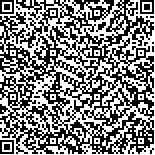下载中心
优秀审稿专家
优秀论文
相关链接
摘要

继叶绿素a反演的“蓝绿比值法”后,叶绿素a荧光遥感成为海水叶绿素a浓度反演的重要方法,对提高二类水体和赤潮水体的叶绿素a浓度的反演精度效果明显。本文回顾了人们对水体叶绿素a荧光的认识、测量和研究的历史过程,介绍了荧光产生的生物学机理以及它随叶绿素a浓度的正相关和“红移现象”等主要光谱特征。本文还总结了荧光量子产量、不同藻种生理状态、水体其他物质及大气的吸收等多种因素对叶绿素a荧光遥感的影响。基于对叶绿素a荧光光谱特征和影响因素的认识,人们相继建立了两种荧光遥感方法———基线荧光高度法和归一化荧光高度法。对于前景广阔的叶绿素荧光遥感领域,人们正进行着更深入的研究与探索,积累更多的现场数据和卫星同步数据,逐步完善和改进反演模型。
Besides empirical algorithm with the Blue-GreenRatio, fluorescence remote sensing ofChlorophylls is also an mi portantand validmethod for retrieving chlorophyll-a concentration in the ocean, especially forCaseⅡ waters and the sea with algal blooming. This study reviews the history of initial cognitions, investigations and detailed approaches towards chlorophyll fluorescence, introduces the biologicalmechanism of fluorescence remote sensing and main spectral characteristics such as the positive correlation between fluorescence and chlorophyll concentration, the Red-Shift phenomena. In addition, there are many influential factors which increase the complexity of fluorescence remote sensing, such as fluorescence quantum yield, physiological status of various algae, substance with related optical property in the ocean, atmospheric absorption etc. Based on these cognitions, scientistshave found twoways to calculate the amountof fluorescence detected byocean colorsensors: fluorescence line height and normalized fluorescence height. These two ways are currently the foundation to retrieve chlorophyll-a concentration in the ocean. As the in-situmeasurements and synchronous satellite data are accumulated, the fluorescence remote sensing of chlorophyll-a concentration in CaseⅡwaters should be understoodmore deeply and new algorithm could be expected.

